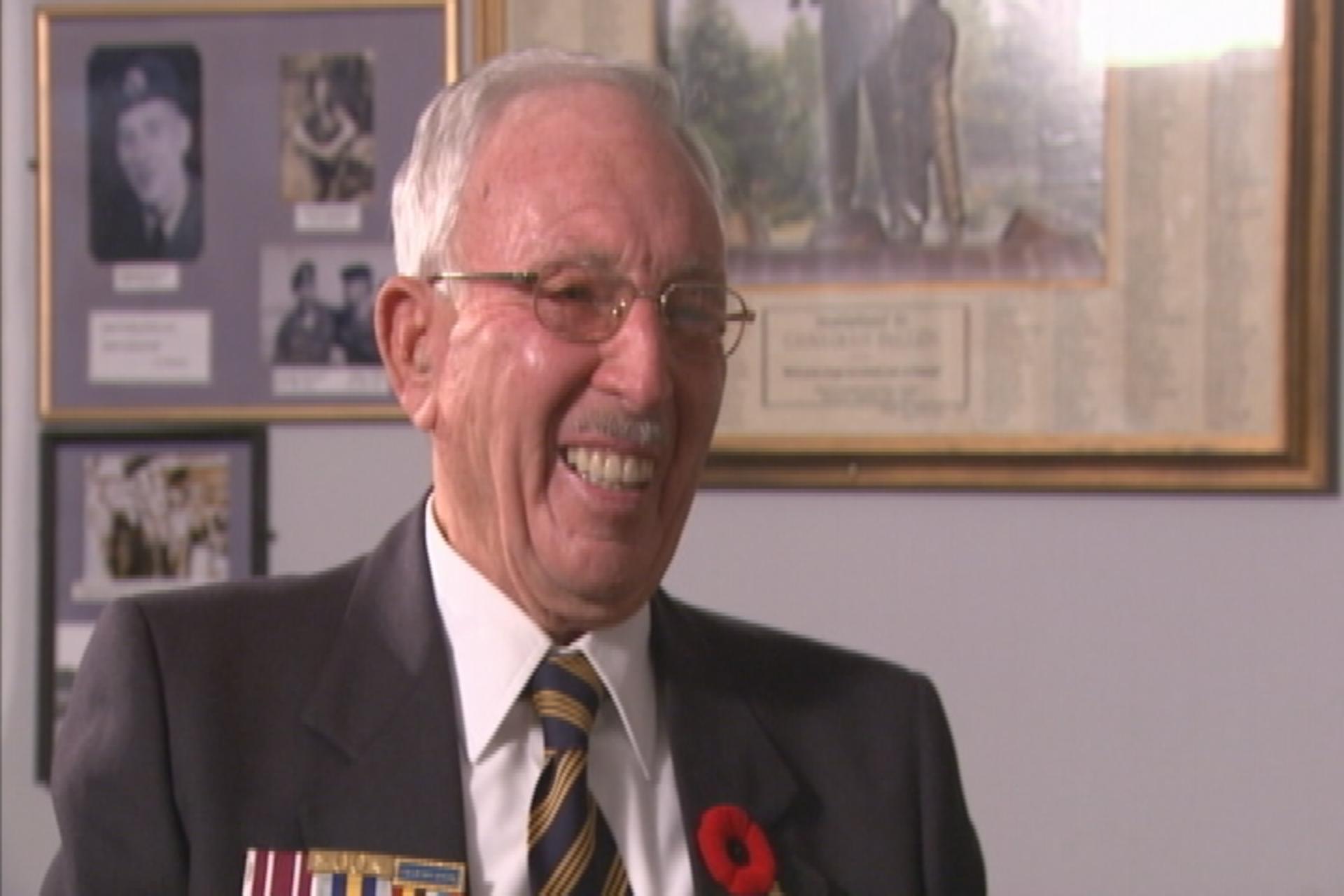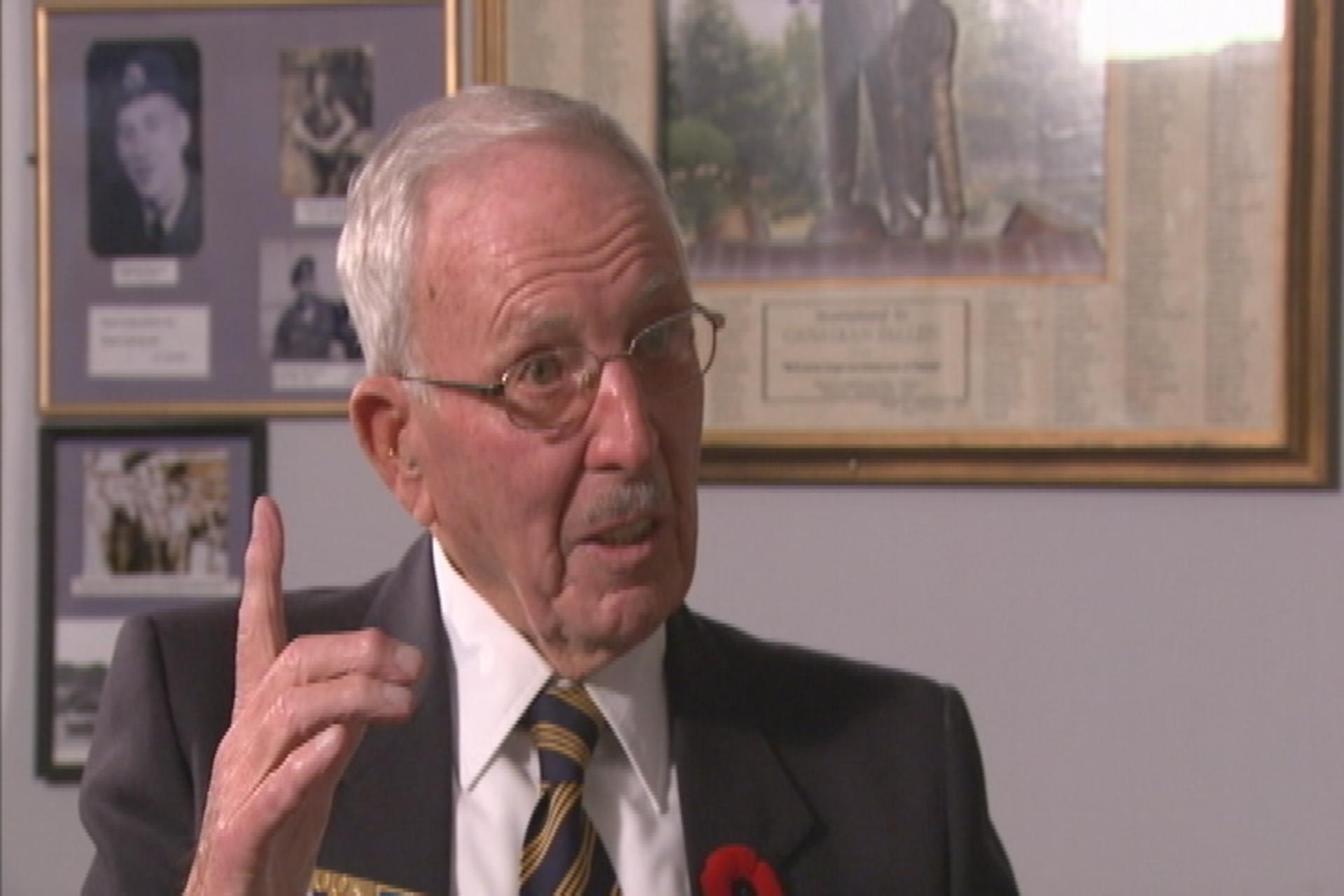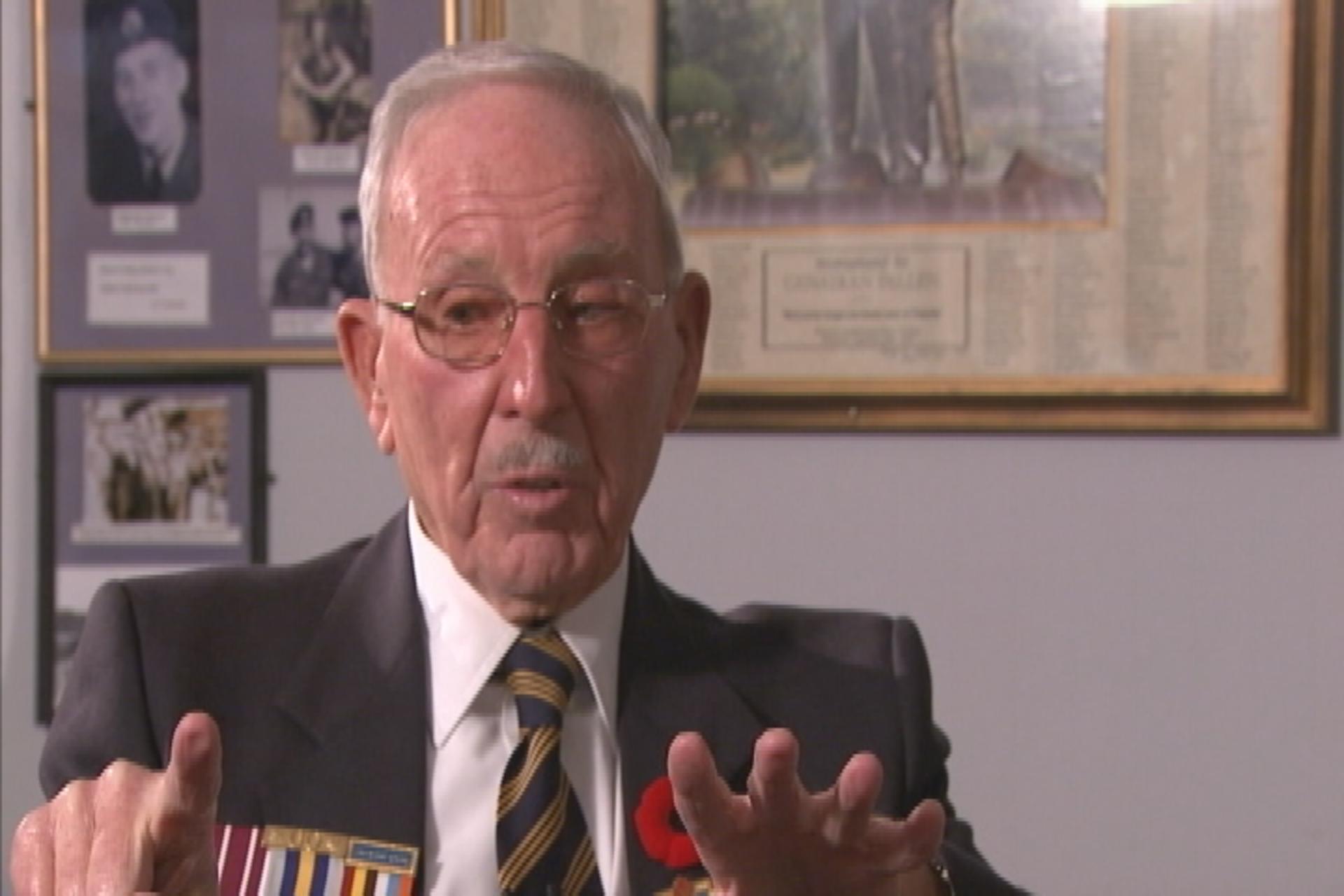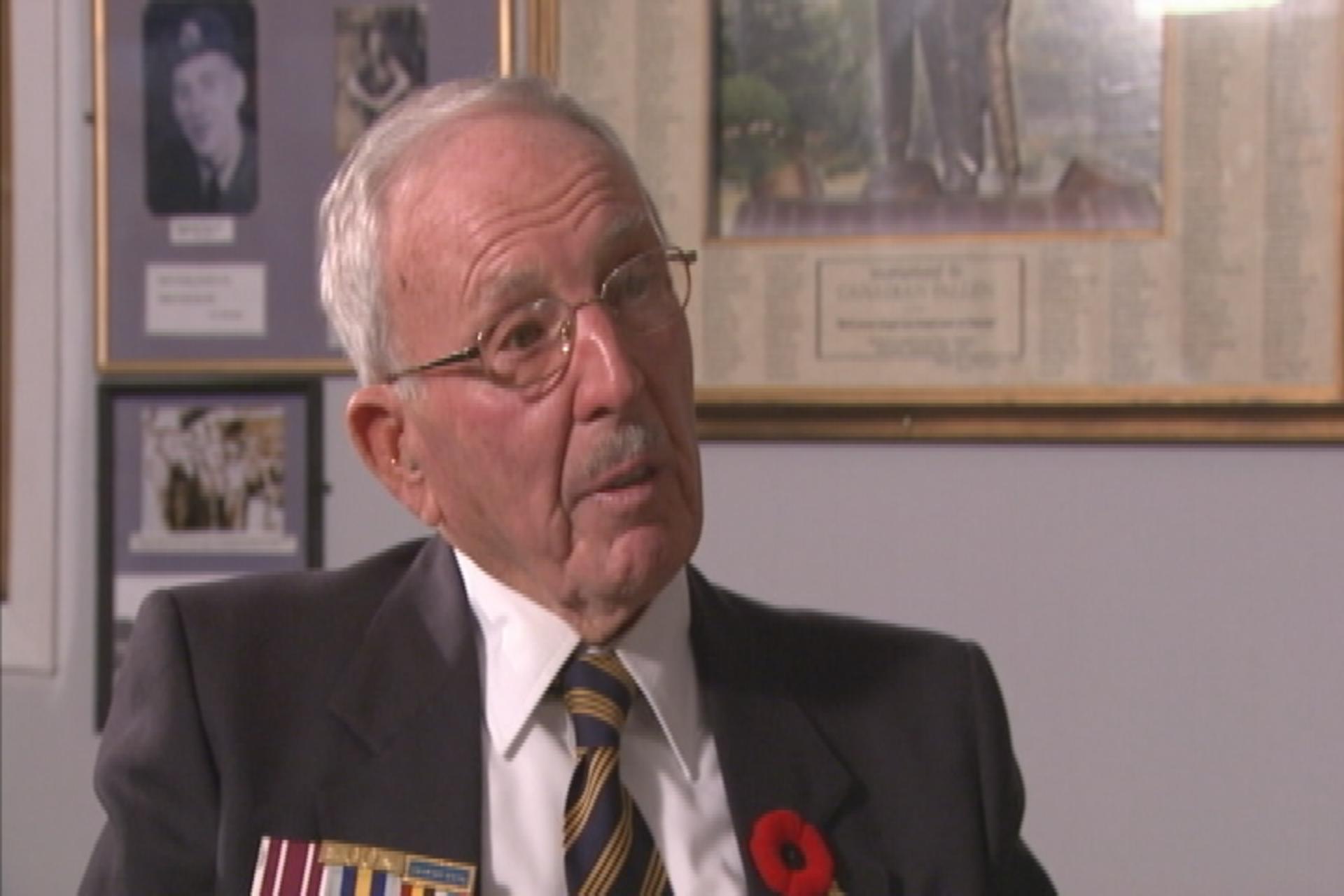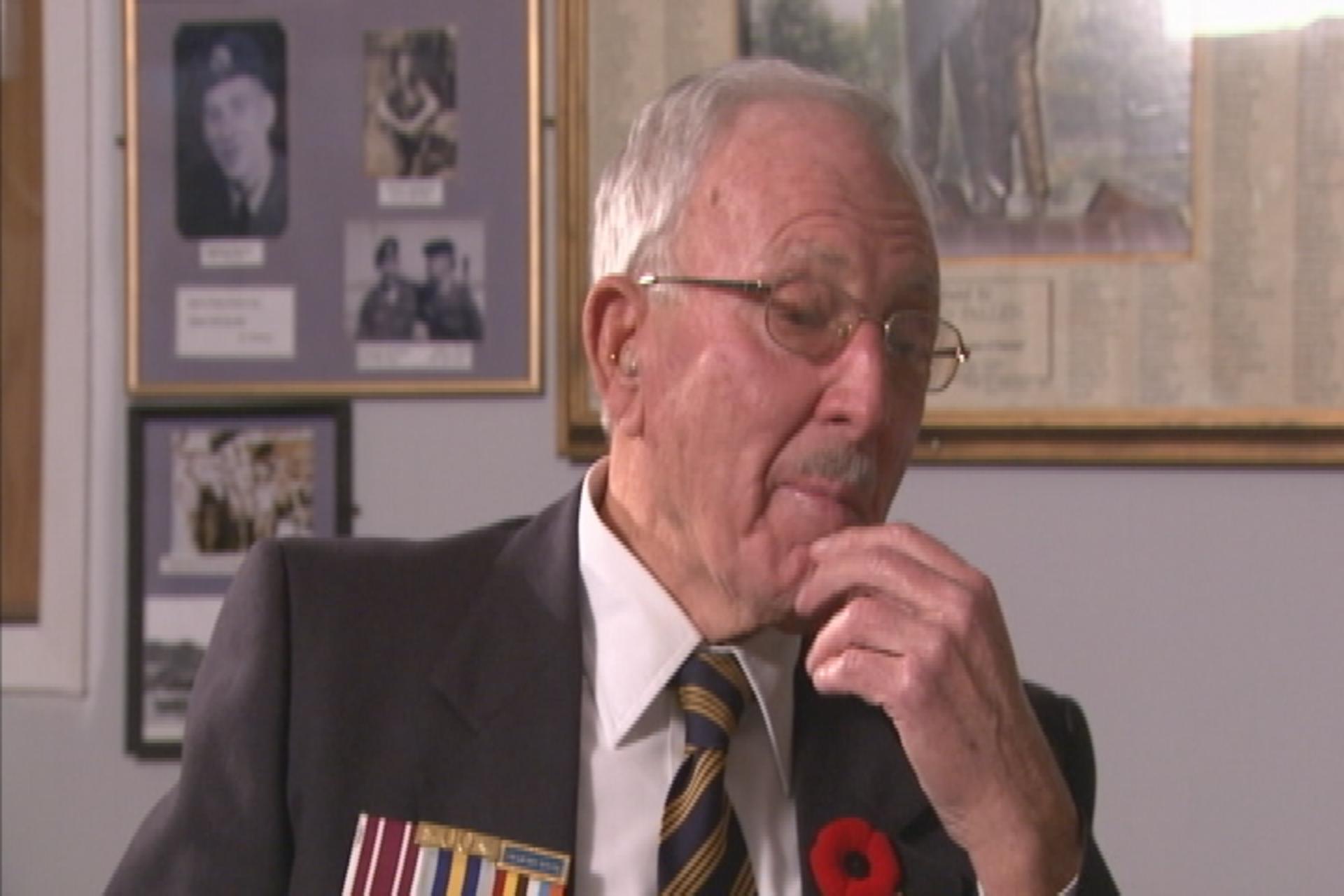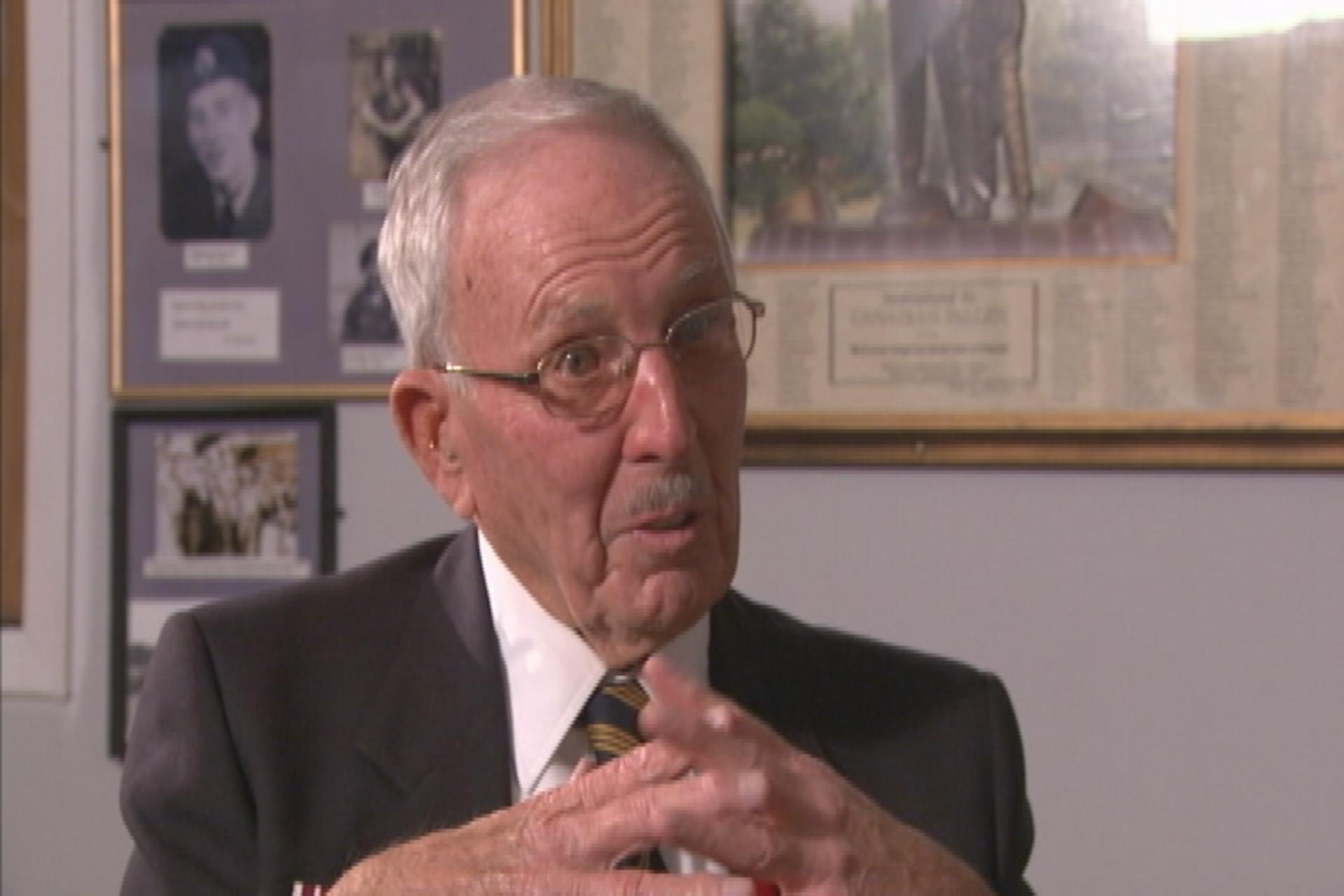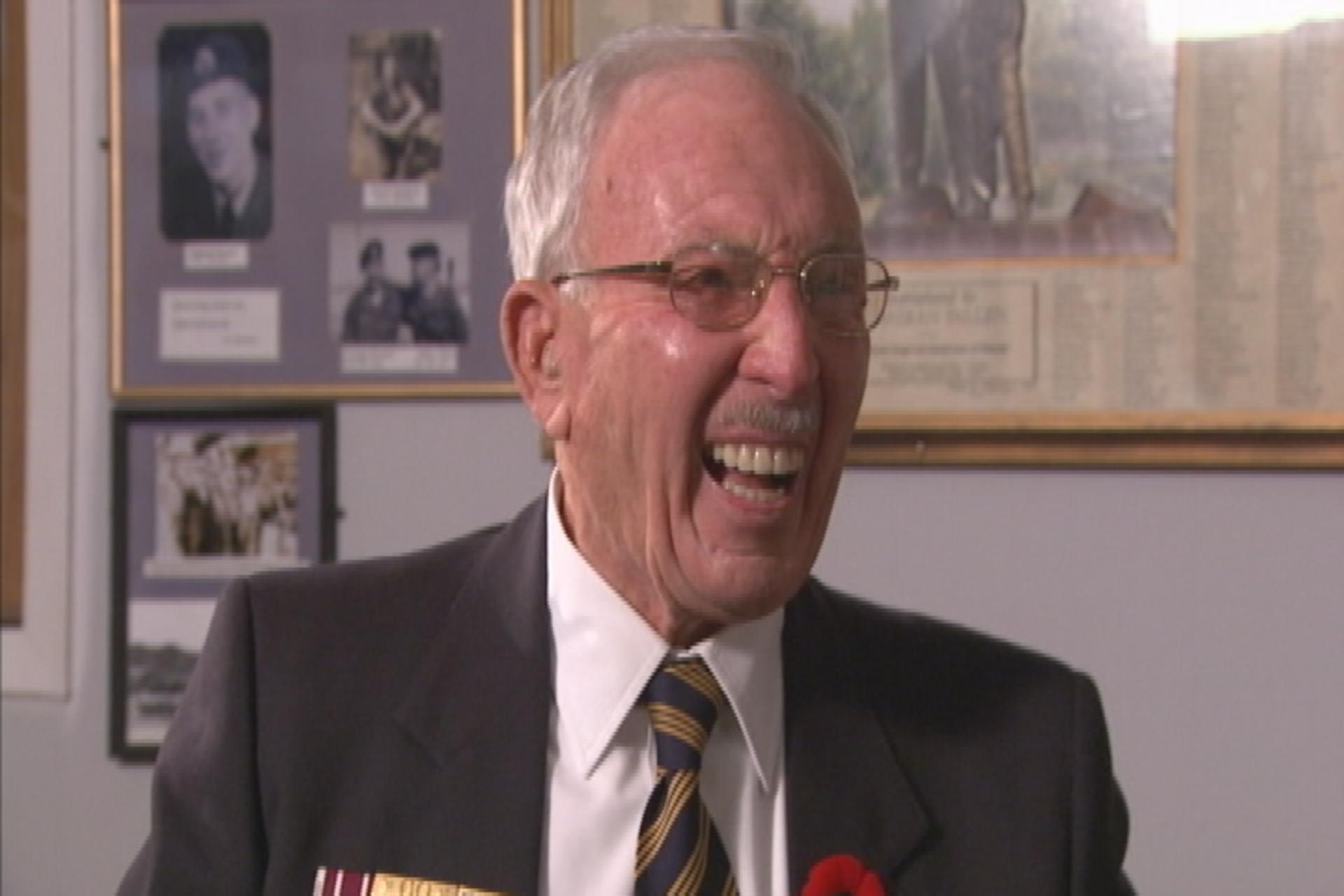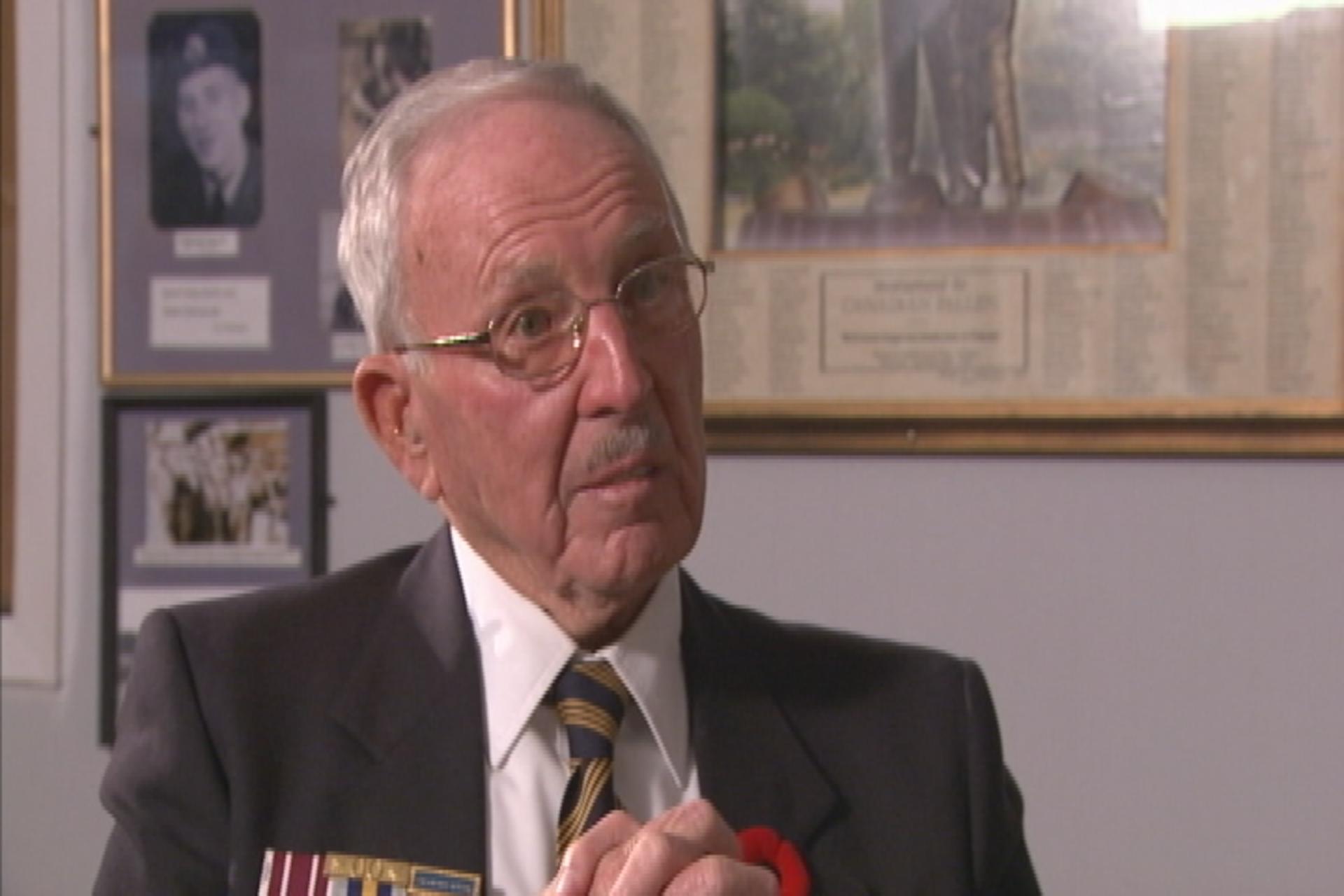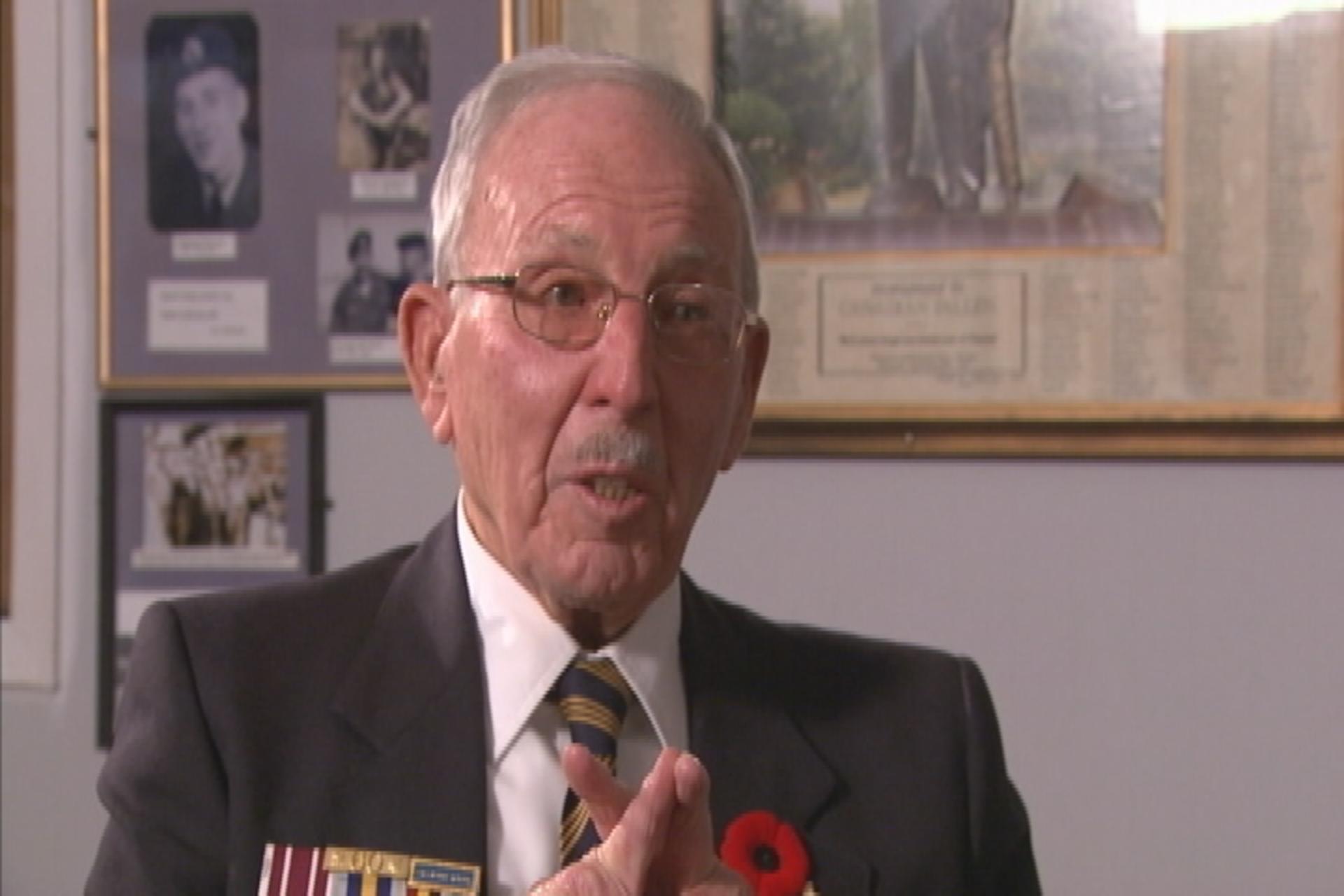Initial Setup for the Artillery
Heroes Remember
Initial Setup for the Artillery
Transcript
I remember we were… I’m not sure if we were right or left now
with the American First Cavalry Division. We were there First Cav
I remember that. And after we were there a few months the
British and the Australian, New Zealanders and the Indians and
the Canadians, we formed the First Commonwealth Division.
We served most of our time under the heading of the First
Commonwealth Division. After we got there and we got
straightened away, the first thing you had to do, you had to dig
in your artillery piece and fill up all the ammo cans with clay
and sort of build yourself a protection around and then so many
fellows on the gun would build a bunker then to sleep in
and we took the canvas off our tractor trailer, the trailer that pulled
the gun and we used the tarpaulin off the tractor trailer for a
roofing for our bunker, you know, you dig in and fill up with clay
and then you put the canvas tent over to sleep in.
Just as you got everything all settled away you’d probably be firing for
maybe half hour and then they would say cease fire and the
target is eliminated or something like that and by the time you
got straightened away and started to get a bit comfortable
the sergeant major would come along, “Cease fire, limber up, prepare
to move!” You’d have to do it all over again. And then one
position to the other position, all during the summer now we had
quite a few moves like that but when the bad weather,
cold weather came on, the line, the Chinese were in the war then.
They weren’t particular about moving any more than we were
so they sort of straightened out front and became stagnant during the winter.
So moving then was very little in the winter but during the summer when
we were there we moved quite a lot around.
We were actually, artillery see is a supportive unit
for the infantry so we had to follow the infantry; wherever they
went we were there with them. Our biggest worry was well we had
artillery well they had light artillery too and what you call
bazookas and they knew where we were by the same token our
officers knew where they were too and once you fired the gun
well they got your position and then probably during the night
they had a little spotter plane, Big Chick Charlie we called him.
Description
Mr. Mercer speaks about being part of the First Commonwealth Division and his regiment’s responsibilities for setting up camp.
Leslie Mercer
Mr. Leslie Mercer was born June 24, 1927 in St. John’s, Newfoundland. Being a child of the Great Depression, he went to work at the dockyard at a very young age. He was too young to volunteer for the Second World War but when the Korean War broke out he was quick to join with the Special Force. He became part of the Royal Canadian Horse Artillery as a bombardier. After spending a year in Korea, Mr. Mercer returned to St. John’s, Newfoundland, married and raised a family.
Meta Data
- Medium:
- Video
- Owner:
- Veterans Affairs Canada
- Recorded:
- November 10, 2015
- Duration:
- 3:04
- Person Interviewed:
- Leslie Mercer
- War, Conflict or Mission:
- Korean War
- Location/Theatre:
- United States
- Battle/Campaign:
- Korea
- Branch:
- Army
- Units/Ship:
- Royal Canadian Horse Artillery
- Rank:
- Bombardier
Related Videos
- Date modified:



